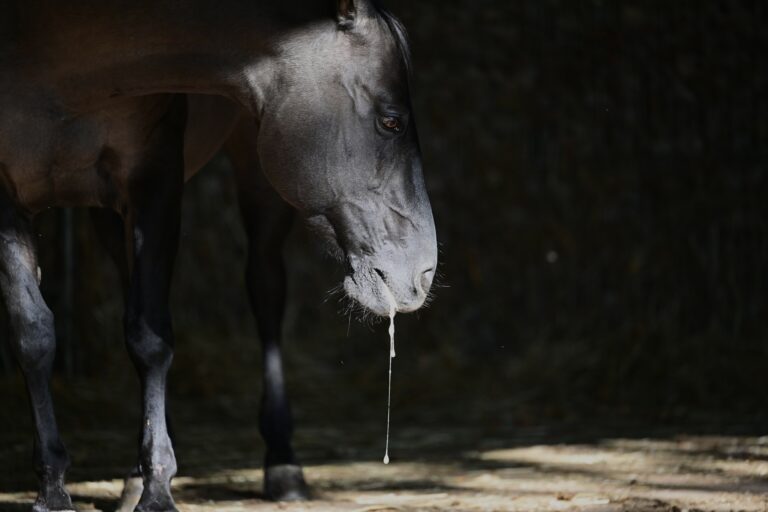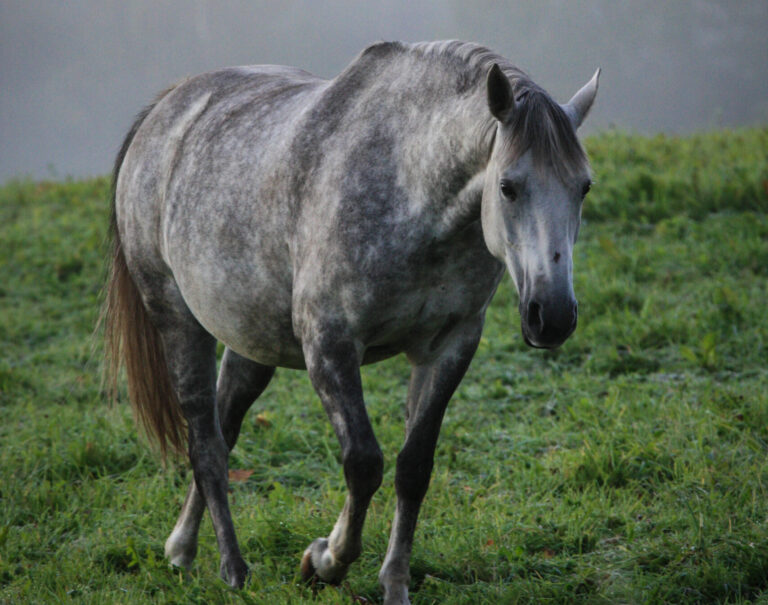
Abdominal surgery in a horse that necessitates a long healing time with confinement wreaks havoc on a horse’s muscle strength and return to performance. Adaptive training of skeletal muscles may persist during 5-6 weeks of inactivity, but by 12 weeks, muscles return to their pre-training level.
A retrospective cohort study at Michigan State University’s College of Veterinary Medicine looked at the effect of core abdominal rehabilitation exercises (CARE) for four weeks following colic surgery and how that influences a horse’s return to performance [Holcom, S.J.; Shearer, T.R.; Valberg, S.J. The Effect of Core Abdominal Muscle Rehabilitation Exercises on Return to Training and Performance in Horses After Colic Surgery. Journal of Equine Veterinary Science 2019, vol. 75; pp. 14-18].
One critical problem with abdominal surgery is the loss of tone and strength in epaxial and abdominal muscles—this results in back weakness and loss of core strength. Not only is a horse not able to return to its previous level of work, but there also is an increased risk of injury following loss of muscle strength.
Abdominal and back muscle exercises are able to increase the cross-sectional area and symmetry of the multifidus muscles that stabilize the spine. With that in mind, the objective of the study was to implement four weeks of CARE exercises as part of rehab after colic surgery. The CARE program is based on dynamic mobilization exercises and baited stretches. Attention is focused on the neck, mid-thoracic and thoracolumbar spine. The multifidus muscles that stabilize the intervertebral joints work together with abdominal muscles to help build core strength while building back strength.
The CARE therapy was performed on 11 horses at 30 days post-op provided there were no incisional complications; 51 horses served as controls and their convalescence did not include core abdominal exercises. Horses—both CARE recipients and controls—selected for the retrospective study survived at least a year after surgery and were all involved in consistent work and competition in dressage, show jumping or driving.
Assuming no incisional or surgical complications, the post-operative protocol for colic surgery calls for 30 days of stall confinement with 2-4 times a day walking in hand for less than five minutes. Horses that developed complications at the surgical site were confined for an extra four weeks beyond resolution of the complication, and they also wore a hernia belt. Four of the 11 CARE horses developed incisional infections compared to infection in four of 51 controls.
After the four-week confinement (or longer for those with complications), the horses are turned into a small paddock for four weeks. At 6-8 weeks post-op, walk and trot under saddle begins, with canter introduced by eight weeks post-op. Turnout into large pasturage is allowed between 8-12 weeks. Jumping and galloping were introduced at 12 weeks post-op.
The study identified that horses in the CARE program were able to re-enter work under saddle and return to full training more quickly (by 6-10 weeks) than those that did not have the benefit of the core abdominal exercises (which returned to full training by 8-17 weeks). Implementing training exercises in the period before detraining effects occur, i.e. by 12 weeks, might have shortened the time needed to return the CARE horses to full work. The time to return a horse to competition was similar for both groups, however.
Based on the owner or trainer’s comments, the CARE horses “showed improved performance from the period before to the period after surgery” compared to the control horses. Performance improvement was noted in 9 of 11 (82%) CARE horses; one horse was similar in performance; and one noted that performance declined. Of the 51 control horses, only four (8%) owners/trainers felt that horse performance improved; 39 (76%) felt the horse performed similarly to before surgery; eight (16%) felt that performance declined following colic surgery.



![[Aggregator] Downloaded image for imported item #18216](https://s3.amazonaws.com/wp-s3-equimanagement.com/wp-content/uploads/2025/09/30141837/EDCC-Unbranded-8-scaled-1-768x512.jpeg)
